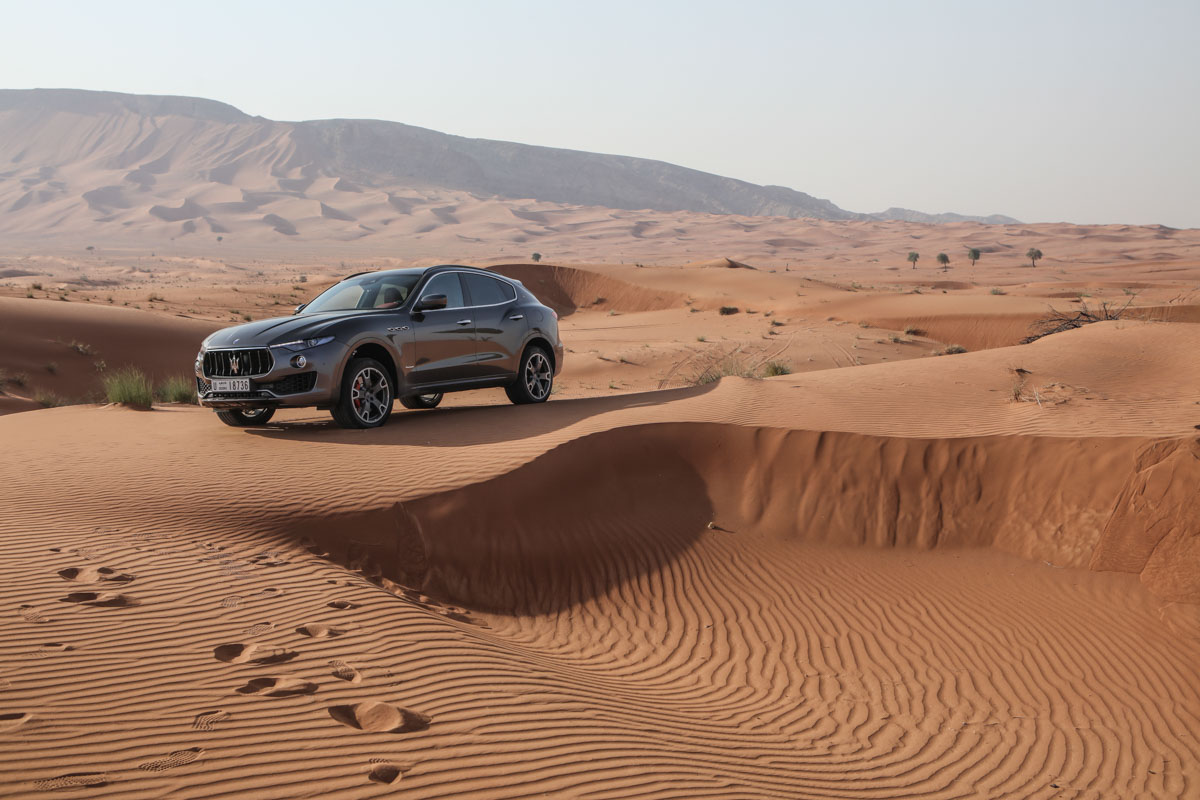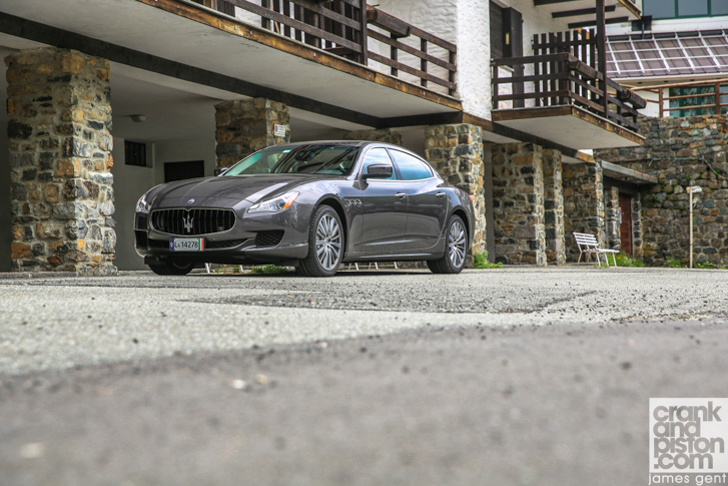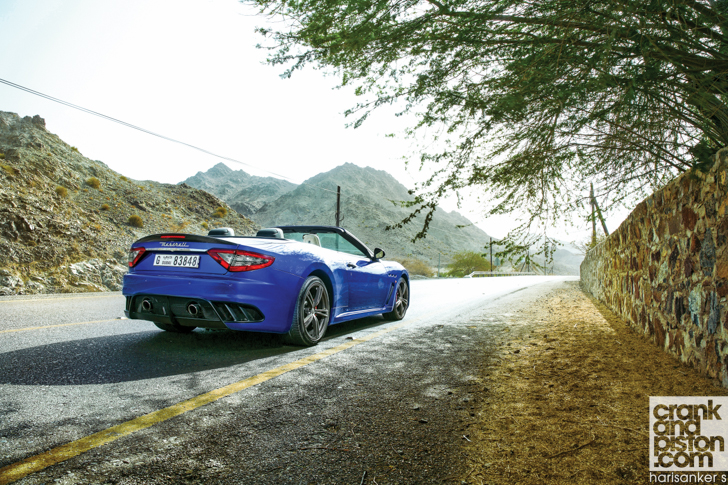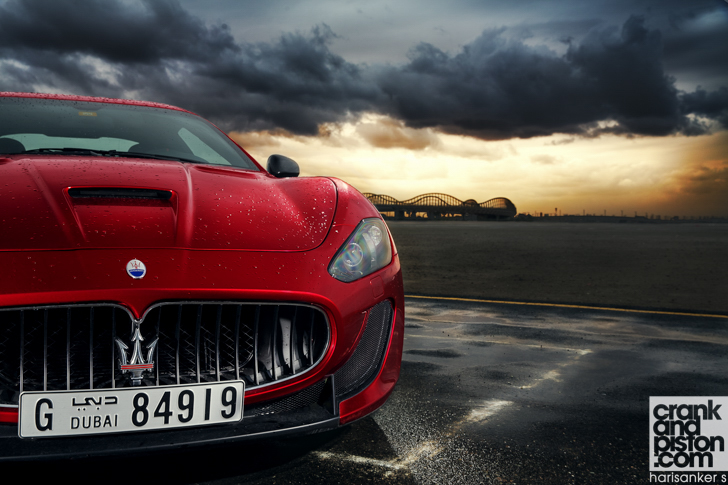Its maker calls it “The Maserati of SUVs” and it’s high time c&p got its hands on one to see if that’s a claim to be taken seriously.
| Engine | Power | Torque | 0-100kph | Top speed | Weight | Price |
|---|---|---|---|---|---|---|
| Twin-turbo V6, 3,000cc | 424hp @ 5,750rpm | 428lb ft @ 1,750rpm | 5.2sec (claimed) | 264kph | 2108kg | from $87,000 |
| Gorgeous to look at, sounds great and is genuinely capable off road | |
| Cabin not especially practical, tech is no match for German rivals |
The last time I drove a Maserati was about three years ago. It was a Ghibli and, at the time, Maserati was very excited about having a bit of money and finally getting out of Ferrari’s shadow, CEO Harald Wester laying out a product plan that, finally, probably, maybe wouldn’t fail. The Ghibli was outstanding but still felt a bit exciting and unpredictable in a kind of “will the car start today or break down on the way to the office?” way. For example, the one I drove had 6,000km on the clock and the driver’s seat belt was already faulty. Don’t get me wrong, the Ghibli is still a great car and one that will bring endless joy to its owner. It’s just that it may prove, at times, a little bit moody.
So when the Levante was announced, I immediately thought it a bold move, like Porsche when it launched its Cayenne version of Volkswagen’s Touareg. And just when it looked like it might become the world’s most desirable SUV, Alfa Romeo unveiled its own strategy to conquer the world, starting with the Giulia and the Stelvio. Maserati, it could appear, can’t catch a break.
Things aren’t as grim as we might think, though. During 2016 Maserati sold more than 42,000 cars, while just six years ago it struggled to shift 6,000. In the first half of 2017, more than 15,000 Levantes were sold – not at all bad in a suffering industry. True, Porsche moves more than 70,000 Cayennes every year but it doesn’t have the spotted financial history of the Italians, nor has it been played with like a calcio ball.
So when an invitation to test the new GranLusso and GranSport versions of the Levante thumped into our inbox, I could not have been more curious to discover what the ‘Maserati of SUVs’ is all about.
Looking at it in the metal, aside from the obvious gorgeousness, what strikes the most is the size of it. At 5m it is large. Longer than a Cayenne, as big as a Q7 and, at three metres, with a longer wheelbase than either. This is because Maserati has decided to put the wheels as close to the corners of the car as possible, and keep all the interesting stuff within the four-post bed. Thanks to this configuration the designers have managed an ideal 50/50 weight distribution and reduced the total height of the car to 1.68 metres, or a whole six centimetres shorter than the Audi. I know what you are thinking: you reduce the height by lowering the ground clearance, but you would be wrong. It stands at around 22cm, and with a 40mm adjustment through the suspension settings. That’s Land Cruiser territory.

With these dimensions, the Maserati is both sleek and sporting in its appearance, something complimented by its weight distribution and suspension configuration. Unfortunately, though, something has to give. With the engine located so far back in the chassis, a torque converter in lieu of a clutch and an eight-speed ZF gearbox and four-wheel-drive differential, there is little space for cubbyholes in the cabin. This might be the sticking point for the Levante, that while being a true SUV it does not provide the practicality or ample storage space normally associated with these kinds of cars.
Thus, the centre console is very wide and the cockpit can feel a bit constrained. But instead of this being a negative connotation it is actually a positive – at least if you are a ‘car person’. Rather than uncomfortable, you feel an integral part of the man-machine collaboration. Your right foot rests next to the transmission, and you can actually feel the heat given off by what’s going on in there, much like you feel the heat on your legs when riding a motorcycle. The big Maserati feels very mechanical, very connected and very direct.
That directness also applies to the new electric power steering that, while as fast and precise as the old hydraulic system, now provides different levels of resistance depending on the situation and speed. This tech doesn’t negatively affect steering feedback, either – you are still very much aware of the situation at tarmac height.
There’s been no compromise on the Levante’s levels of luxury. While the controls are a bit ‘button-y’ in an era when more and more comforts are handled by touch screens, they are laid out with Italian ergonomic flair. Going by my first impressions of the two new models, my preference would be for the GranLusso thanks to its more subtle aesthetics and its rather lovely Ermenegildo Zegna branding in the cabin.
But never mind that. What’s most surprising about my experience with the Levante is not the driving. It’s the sailing. Putting its money where its mouth is, Maserati arranges some proper off-roading – hard dune bashing in this sensitive and artful piece of engineering, that produces music through its exhaust and is more at home outside a yacht club than in the middle of the desert. I have done my fair share of organised desert safaris in Dubai, and this scarf wearing, soft-spoken delicacy becomes an unstoppable fun machine in the sand.
With a 3-litre V6 engine producing 430bhp and 428lb ft of torque, we have enough of both to play around up and down as much as we like, and with the stability program monitoring every wheel’s angular speed versus driving speed, there’s enough control not to get stuck. Ever. The reality is that the Levante is as much an SUV – if not more – as any other luxury SUV in the market. And more stylish, which is probably the reason why it is becoming the model that’s switching buyers onto the brand in the first place.
I could go on about the driver assist technologies and innovation with safety and security, but it’s just better to say that Maserati has integrated the assistance systems other premium manufacturers have had for some time. Perhaps we could say that the dashboard dials should, in this day and age, be digital. But they just look better the old fashion way, the same as the dash-mounted Maserati clock.
Priced between $87,000 and $115,000, I wouldn’t exactly say the Levante is a bargain. But compared to similarly spec’d Porsches or Mercs, it’s quite the undercut. Its desirability, exclusivity, design and general mechanical feel trumps much of its competition and I’d give it a full five-star rating but for one thing: I suspect there’s much more to come with this Maserati. They’re just getting started.



